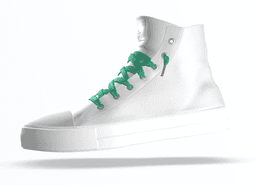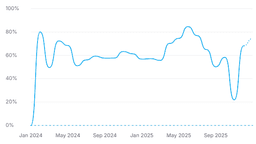How Did We Get Here? The History of Web AR
The history and evolution of Web AR started with Ivan Sutherland’s ‘Sword of Damocles’ in 1968, named ‘Augmented Reality’ in 1990 with applications in Boeing’s work, transformed with ‘AR Quake’ game in 2000, and notably peaked with the release of Google Glass and Microsoft HoloLens. Today, with the emergence of WebAR, it’s drastically changing our interaction with the digital world.

This article will provide the reader with a chronological overview of Web AR’s historical development and its evolution across different fields, indicating how it’s shaping the future of augmented reality technology.
The Dawn Era: A Brief Walkthrough of Augmented Reality’s Inception
In the vast universe of technology, our journey begins with the birth of Augmented Reality (AR) in 1968. Ivan Sutherland, a visionary in his own field, was the first to pioneer the world to this innovative technology with his infamous invention of the ‘Sword of Damocles‘. This head-mounted display system paved the path for AR as we know it today.

Incredibly, this was all happening before the advent of the internet. Let’s take a closer look at some of the significant events that shaped the tale of AR’s inception.
- The ‘Sword of Damocles’ comes into existence, bringing the concept of AR to life in 1968.
- This new trend starts evolving from a sheer concept to practical utilization in various tech domains.
- In 1990, coined for the first time, the term ‘Augmented Reality’ marked its spot in the world of technology.
Exploring the birth of AR in 1968 with Ivan Sutherland’s invention, ‘Sword of Damocles’, and the inception of AR’s journey in the world of tech.
The dawn of AR was characterized by the sheer audacity of inventors and their unparalleled vision of what future technology could look like. It was these very ideas that served as the cornerstone of AR’s eventual evolution.
| Year | Event |
|---|---|
| 1968 | The first-ever AR system, ‘Sword of Damocles’, was introduced by Ivan Sutherland. |
| 1990 | The term ‘Augmented Reality’ is coined and recognized officially in the field of technology. |
Venturing into 1990s: Advent of immersive AR systems and its application in different fields
As we move into the 90s, AR’s journey becomes more fascinating and diverse. The birth of fully immersive AR systems took a leap with Louis Rosenburg’s ‘Virtual Fixtures’ system for the U.S. Air Force in 1992. Consecutively, AR found a vital role in Boeing’s aircraft construction work, marking an early example of AR’s potential in diverse fields.

Both these key developments were elemental in shaping AR’s future, paving the way for more broad-based applications and acceptance.
- In 1992, the ‘Virtual Fixtures’ system provided a fully immersive AR experience for the first time.
- AR technology became an integral part in constructing Boeing’s aircrafts, showcasing its early pragmatic applicability.
Immersing into the Birth of AR Systems: A Gaze through the ‘Virtual Fixtures’
The creation of ‘Virtual Fixtures’ by Louis Rosenburg in 1992 represented a remarkable advancement in AR systems. It wasn’t just a significant development for AR technologies; it also offered compelling tangible benefits, such as increased productivity and safety amongst U.S. Air Force pilots. For more insightful information on AR’s impact in diverse sectors, review this piece on how businesses are benefiting from WebAR.

AR’s early journey, marked by these pivotal developments, set a strong foundation for the possibilities that lay ahead.
Turn of the Millennium: Honing AR into Practical Applications
As we turned the page into a new millennium, Augmented Reality (AR) began a transformative journey. The technology ceased to remain a theoretical novelty and embarked on a path of real-world, practical applications. This revolution brought to life the exciting potential of AR, from immersive gaming experiences to enriching print advertisements, and its foray into the nascent mobile world.

AR Quake: Unleashing Gaming Potential
In an effort to bring AR to the masses, the year 2000 marked the emergence of the pioneering AR game, ‘AR Quake’. As a fitting homage to the immersive origins of AR, the game utilized gyroscopes and portable computer technology to create an engaging, novel gaming experience. This truly laid the foundation for AR’s role in the burgeoning gaming industry.

The implementation of this technology went as follows:
- AR Quake integrated AR technology into the gaming environment.
- Players carried a wearable backpack equipped with a computer and gyroscope, promoting interactive gameplay.
- The gameplay concept leveraged the real environment, overlaying virtual elements onto it to build a unique experience.
Learn more about this groundbreaking venture into the gaming field with insight into AR’s role in gaming and how it adds depth to the metaverse.
Commercial Applications & The Birth of Mobile AR
The turn of the millennium was pivotal for AR, not just in gaming, but also in fields such as advertising and mobile app development. Innovative applications ranged from AR-enabled print ads to AR-based mobile applications, sparking a transformation in how the technology was consumed.

AR Makes a Print Impression
A striking example of AR’s commercial use appeared in print ads, with BMW leading the charge. When scanned by a smartphone, AR became a unique storytelling medium, transforming static print ads into interactive experiences.
The use of AR in this setting encompassed:
- Adding an interactive AR layer onto print advertisements.
- Offering a unique, engaging narrative to captivate potential customers.
- Providing consumers with the opportunity to interact with products or services prior to purchase.
AR Steps into the Mobile World
Earlier mobile applications of AR were admittedly primitive, existing to show potential rather than fully-formed products. Indeed, these were exciting developments. They laid the groundwork for future improvements and paved the way for the comprehensive, high-fidelity mobile AR experiences we see today.
ARToolKit: Propelling AR into the World Wide Web
AR’s journey did not stop at gaming, advertising or app applications; it has steadily made its way into the realm of web browsers. ARToolKit’s release signposted an integral development in the pursuit of WebAR, influencing future strides in AR and web development.ARToolKit’s impressive toolkit introduced computer vision capabilities into web applications, projecting AR elements right in the inhabitant world of browsers.
Through this evolution of AR, numerous fields benefited greatly:
| Field | Benefit |
|---|---|
| Gaming | Immersive, interactive experiences |
| Advertising | Interactive storytelling and customer engagement |
| Web Development | Integration of AR features into webpages and applications |
The Modern Marque: AR Integrates with Social Networks and Retail
A significant turn in the journey of Augmented Reality came when it stretched its boundaries beyond the realms of gaming and commercial ads, entering the landscape of social networking and retail.
AR’s Evolution Aided by Social Media Platforms
The year 2015 was momentous in the amalgamation of Augmented Reality and social media. Snapchat took the leading role in advancing AR’s expansion, paving the way for new and immersive user experiences. Following in Snapchat’s footsteps, titans like Facebook and Instagram also embraced the technology, revolutionising their platforms.
- Snapchat: Snapchat introduced lenses, an AR-based feature that overlays digital enhancements onto users’ faces.
- Facebook: With the launch of ‘Spark AR’, Facebook users can build and publish their own AR effects.
- Instagram: Similar to Facebook, Instagram launched AR filters that brought fun, creativity, and interaction to the platform.

The Transformation of Retail Through AR
AR’s integration with the retail industry added a new dimension to the shopping experience, creating a seamless blend of online and offline worlds. With AR, customers could visualize products in their space before buying, thereby promoting convenience and a tailored customer journey.
Therefore, AR’s role in socially interactive platforms and the retail playfield was not merely limited to entertainment but edged towards enhancing user experience and efficiency. Find more details on browsers that best support the use of WebAR, contributing substantially to its popularity and adoption.
Breaking New Ground: AR’s Technological Advancements in the Modern Era
The past decade has seen a surge of dynamic advancements shifting the paradigm of the AR landscape. Google Glass and Microsoft HoloLens stand as two such crucial turns in AR’s journey.
| Year | Product | Significance |
|---|---|---|
| 2014 | Google Glass | An exemplar of wearable AR technology, Google Glass endeavored to overlay digital information into users’ real-world view. |
| 2016 | Microsoft HoloLens | Aids the convergence of physical and digital worlds, Microsoft HoloLens facilitated immersive and impactful experiences in various sectors. |

The merger of AR with mainstream society and the vast leaps in technology significantly amplified its scope and potential. These advancements not only stood as milestones in AR’s progress but also provided a grand leap into its future prospects.

Into the Future: A Sneak Peek of What Holds Next
As we cast our gaze ahead, it’s clear that the trajectory of Augmented Reality (AR) and WebAR is set for unprecedented leaps forward, opening up new possibilities and innovative breakthroughs. The not-so-distant future promises scenarios that earlier belonged in science fiction. Let’s explore some anticipated transformations that we may encounter in the coming years.

Envisioning the Future Augmentations in AR and Its Influence on Various Industries
The advent of WebAR has undoubtedly broadened the scope of AR applications across multiple sectors. The seamless integration of digital information with our physical world, without needing an app download, has particular allure. This easily accessible technology is poised to disrupt industries, from education and healthcare to construction and design.
- Education: Distance and e-learning will take on new dimensions, with interactive 3D models and virtual field trips enhancing understanding and engagement.
- Healthcare: Virtual consultations, AR-guided surgeries, and advanced patient education tools are on the horizon.
- Construction: Real-time analysis of construction sites, accurate measurements, and clash detection with existing structures using AR overlays will greatly reduce errors and construction time.
- Fashion & Retail: Virtual fitting rooms and Augmented Reality shopping experience shall redefine customer experience.

Analyzing the Potential Breakthroughs and Practical Applications of WebAR
As we progress further into the digital age, the expansion of WebAR capabilities appears limitless. The blend of AR with cutting-edge technologies such as Artificial Intelligence (AI) and Machine Learning (ML) holds the potential to revolutionize how we interact with the digital world. Take, for instance, the possibility of:
- Real-Time Data Analytics: AR combined with AI can provide real-time data analytics, dramatically improving decision-making processes.
- Spatial Computing: AR and ML could enable spatial computing, allowing for a more immersive and interactive experience.
- Enhanced User Experience: AI and AR can work together to provide a personalized, contextual, and interactive user experience that is beyond anything we’ve seen till now.
In-depth look at the future possibilities that the evolution of AR envisions in the realm of web
| Tech Integration | Expected Outcome |
|---|---|
| AR + AI | Unprecedented personalization, seamless interaction, and contextual information. |
| AR + ML | Improved pattern recognition, predictive analytics, and diversified applications. |
The advent of WebAR and its intersection with artificial intelligence as well as machine learning is inevitably going to reshape the future of the digital world. We are at the cusp of yet another technological revolution, where the boundaries between real and virtual blur as we know it.








